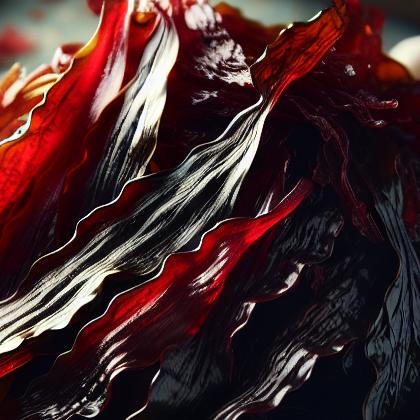Showing results for 'Seaweed'
close
Seaweed

Palmaria palmata, also called dulse, dillisk or dilsk (from Irish/Scottish Gaelic duileasc/duileasg), red dulse, sea lettuce flakes, or creathnach, is a red alga (Rhodophyta) previously referred to as Rhodymenia palmata. It grows on the northern coasts of the Atlantic and Pacific Oceans. It is a well-known snack food. In Iceland, where it is known as söl, it has been an important source of dietary fiber throughout the centuries.
Dulse seaweed Pairs With:
Food Item
Flavor Affinity Level

Did you know there are 46 food flavor pairings in my database for Seaweed available. What you are seeing above is a random list of 30 items which pair with Seaweed.
For the entire list, beautifully formatted, enter your email address and click the download button below, then I'll email it to you as a PDF.
Dulse seaweed Properties:
| Food Property | Type | Description |
|---|---|---|
| Flavor Profile | Salty | Dulse seaweed is known for its salty taste, making it a popular ingredient in savoury dishes. |
| Texture | Firmness | Dulse seaweed has a firm texture when dried, but becomes tender when rehydrated. |
| Nutritional Value | Micronutrients | Dulse seaweed is rich in essential micronutrients such as vitamins and minerals, including iron, potassium, and vitamin C. |
| Fiber | Dulse seaweed is high in dietary fiber, which promotes digestive health and can help regulate blood sugar levels. | |
| Color | Natural Pigments | Dulse seaweed has a dark red color due to the presence of natural pigments called phycoerythrins. |
| Aroma | Volatile Compounds | Dulse seaweed has a unique aroma that is attributed to the presence of volatile compounds. |
| Chemical Composition | Acidity/Alkalinity (pH) | Dulse seaweed typically has a slightly alkaline pH level, which can vary depending on growing conditions. |
| Cooking Behavior | Heat Conductivity | Dulse seaweed has good heat conductivity, allowing it to cook quickly and evenly. |
| Water Retention | Dulse seaweed has the ability to retain water during cooking, helping to keep it moist and tender. | |
| Oil Absorption | Dulse seaweed has a low oil absorption rate, making it a healthier option for frying or sautéing. |
Food Pairing App - Version 1.2.0
